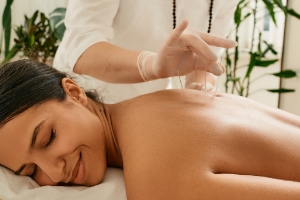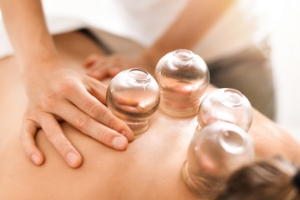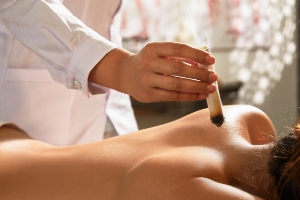No products in the cart.
Mense-Ease
CLINICAL APPLICATIONS
- Pain in various gynecological disorders
- Dysmenorrhea with bloating, cramping, pain, or blood clots
- Menstrual cramping and pain due to endometriosis
- Lower abdominal discomfort and pain due to premenstrual syndrome (PMS) and polycystic ovarian syndrome (PCOS)
- Postpartum pain
WESTERN THERAPEUTIC ACTIONS
- Analgesic function to relieve pain
- Anti-inflammatory action to reduce swelling and inflammation
- Antispasmodic effect of relieving cramping
INGREDIENTS
- Ai Ye (Folium Artemisiae Argyi)
- Chi Shao (Radix Paeoniae Rubrae)
- Chuan Xiong (Rhizoma Chuanxiong)
- Dang Gui (Radix Angelicae Sinensis)
- Gui Zhi (Ramulus Cinnamomi)
- Hong Hua (Flos Carthami)
- Mu Dan Pi (Cortex Moutan)
- Niu Xi (Radix Achyranthis Bidentatae)
- Pu Huang (Pollen Typhae)
- Tao Ren (Semen Persicae)
- Wu Yao (Radix Linderae)
- Xiang Fu (Rhizoma Cyperi)
- Yan Hu Suo (Rhizoma Corydalis)
FORMULA EXPLANATION
Mense-Ease is formulated to treat women’s disorders, such as pain in various gynecological disorders like dysmenorrhea, endometriosis, premenstrual syndrome (PMS), and polycystic ovarian syndrome (PCOS). These women’s disorders are considered qi and blood stagnation in the lower jiao. Mense-Ease contains herbs that activate qi and blood circulation, remove qi and blood stagnation, and relieve pain and cramps.
Pu Huang (Pollen Typhae) has an excitatory action on the uterus and works to invigorate blood circulation and relieve pain by eliminating blood stasis. Ai Ye (Folium Artemisiae Argyi) and Chi Shao (Radix Paeoniae Rubrae) have antispasmodic effects on the smooth muscles to relieve pain. Yan Hu Suo (Rhizoma Corydalis), Chuan Xiong (Rhizoma Chuanxiong), Mu Dan Pi (Cortex Moutan), Gui Zhi (Ramulus Cinnamomi), Tao Ren (Semen persicae), Dang Gui (Radix Angelicae Sinensis), Niu Xi (Radix Achyranthis Bidentatae), and Hong Hua (Flos Carthami) activate blood circulation, remove blood stasis, and relieve pain. Wu Yao (Radix Linderae) and Xiang Fu (Rhizoma Cyperi) are qi regulators that help to relieve abdominal bloating and distension.
In short, Mense-Ease moves qi and blood in the lower jiao to treat various gynecological disorders such as dysmenorrhea, endometriosis, PMS, and PCOS.
Pu Huang (Pollen Typhae) has an excitatory action on the uterus and works to invigorate blood circulation and relieve pain by eliminating blood stasis. Ai Ye (Folium Artemisiae Argyi) and Chi Shao (Radix Paeoniae Rubrae) have antispasmodic effects on the smooth muscles to relieve pain. Yan Hu Suo (Rhizoma Corydalis), Chuan Xiong (Rhizoma Chuanxiong), Mu Dan Pi (Cortex Moutan), Gui Zhi (Ramulus Cinnamomi), Tao Ren (Semen persicae), Dang Gui (Radix Angelicae Sinensis), Niu Xi (Radix Achyranthis Bidentatae), and Hong Hua (Flos Carthami) activate blood circulation, remove blood stasis, and relieve pain. Wu Yao (Radix Linderae) and Xiang Fu (Rhizoma Cyperi) are qi regulators that help to relieve abdominal bloating and distension.
In short, Mense-Ease moves qi and blood in the lower jiao to treat various gynecological disorders such as dysmenorrhea, endometriosis, PMS, and PCOS.
BACKGROUND
Dysmenorrhea is uterine pain associated with menses, starting one to three days before the menses, peaking 24 hours after the menses, and subsiding after two to three days. Dysmenorrhea may be primary or secondary. Primary dysmenorrhea is more common, is not associated with the structural disorder, and is characterized by pain resulting from uterine contractions and ischemia mediated by prostaglandins and other inflammatory mediators. Secondary dysmenorrhea is less common and is usually caused by pelvic abnormalities, such as endometriosis, fibroids, and uterine adenomyosis.






